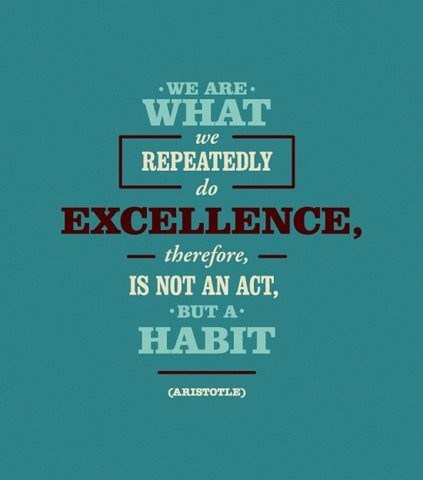Elements of a Great Business Plan
A written business plan is a guide, map and compass combined together for you, the small business owner, to reference while on your journey to the land of making money. It is necessary. However before your write the plan, for your small business, establish its feasibility.
Five Things To-Do Before Writing Your Small Business Plan
- Write out your business concept clearly and concisely.
- Gather all the data you can on “if this business can work” (the feasibility) and the specifics of your business concepts (costs, trends and etc.). Don’t limit the gathering to what you can do, consider using a business consultant or some other source to assist you with collecting all the bits of information.
- Focus and refine your entrepreneurial idea based upon the data compiled. With all the information you should be able to ascertain if you should start and/or continue your small business. This is when you determine the feasibility of your business idea and/or small business.
- If the business idea and/or small business is viable then start outlining your business plan by answering the what, where, why and how of your small business.
- Finally, it is time to write. Put your plan into a compelling form so that it will not only give you insights and focus but, at the same time, will become a valuable tool in dealing with business relationships that will be very important to you.
“Some businesses may be successful without a written business plan but they would the exception”[i]. That is true sentiment and I could not agree more. So with that established, let’s move on to what constitutes a great business plan. The outline below is for any size business, start-up, small or large multinational.
Executive Summary
Write this section last after you have completed the entire business plan. It should be no more than 3 pages. This is what most investors, bankers and people read, so it has to be well written and comprehensive. This is the section where you can infuse your passion for the idea but don’t draft a cheesy sales letter. Key elements to include are a mission statement, description of an ideal customer, the customer’s problem or needs and your solution for the customer.
Company Description
In this portion of the business plan you are discussing how the small business is formally organized and the ownership. If this not a start up then include the business’s history. If it is a start-up business plan then include your personal background. You can add the location information here as well.
Service and/or Product
This is where your entrepreneurial idea is on paper. Describe your line of business, the products(s) and/or service(s) clearly. Be sure to include the features and benefits. For manufacturing business talk about the materials required, supplies and suppliers and production methods.
For all other types of businesses explain costing, sourcing and technology required. If necessary for your small business discuss patents, copyrights, legal considerations and technical issues. Write as if you are explaining it to someone who has never heard of the product or service.
Location (Optional)
For a small business the location of the business can be summarized in the Company Description. However, if you require a production/manufacturing facility or there are multiple locations, then a detailed narrative is required. This is the section of the business plan to convey that information.
Market Analysis
In this section of your business plan you will provide information about the size of the market (how many potential customers) and your target or segment market within the total market. I encourage you to use quantitative and qualitative information. In addition, you will discuss the industry of your small business and its current trends.
Competition
This section answers the question, “who is doing what you want to do in business locally, regionally and nationally”? Profile those other businesses as much as possible. For example, if you can learn what their revenues and profitably is then you can understand the size of the market in terms of dollars. Also, answer the question, “what other businesses are somewhat similar to yours locally, regionally and nationally”? This is important because they will have an effect on your small business.
Marketing and Sales Management
Describe your sales cycle for your product or service in terms of Product, Price, Place and Promotion. Be sure to include the delivery system (distribution strategy) for your product or service. In addition, discuss the strategic alliances necessary and ideal for your small business.
Management, Key Personnel and Organizational Chart
In this portion of your business plan outline the leadership, their roles and their responsibilities. Visually show leadership and staffing with an organization chart. Additionally, describe key personnel and how you will recruit if they are not already a part of your leadership team. If you are submitting your business plan for funding add resumes, CVs and biographies.
Risk Factors
This is the dooms day scenario for your small business. As much as we entrepreneurs think we will be a million dollar success we have to plan for the “what if”. The benefit of this is the ability to create contingency plans associated to the risks and potential failures.
Financials
All the number crunching goes here. All the financial data should be projected over a period of no more than 3 years. The Income Statement, Cash Flow Analysis, Balance Sheet, Breakeven Analysis and other Financial Ratios are the necessary documents to be prepared. Create projections scenarios that are optimistic, conservative and somewhere in the middle ground. If you don’t know how to create then seek professional help. Dollars and cents speak louder than words.
Funding Request (Optional)
As a business owner you will always need money to start or grow your small business. Discuss the capital required, how you plan to use the funds in your small business and the financing structure. If you plan to provide equity or shares in exchange for investment then share the structure in this part of your business plan.
Appendix (Optional)
- Tax Returns
- Franchise Agreement
- Copy of Lease
- Copy of Licenses
- Copy of Resumes
- Copy of Letters of Intent
By following this format, writing a business plan should be a straight forward process. Feel free to modify, edit or elaborate within the provided framework. The final version of your business plan is a document that you can use and discuss with anyone, at any time.
Article References
[i] Financial Resources Manual. VI The Business Plan



1 Comment
The Small Business Plan It Is Important | Lorne S. Wellington | Author and Small Business Consultant · May 17, 2012 at 2:10 PM
[…] Below is a summarized business plan outline with the six main elements. A complete business plan format can found in another post I wrote called, “Elements of a Great Business Plan”. […]